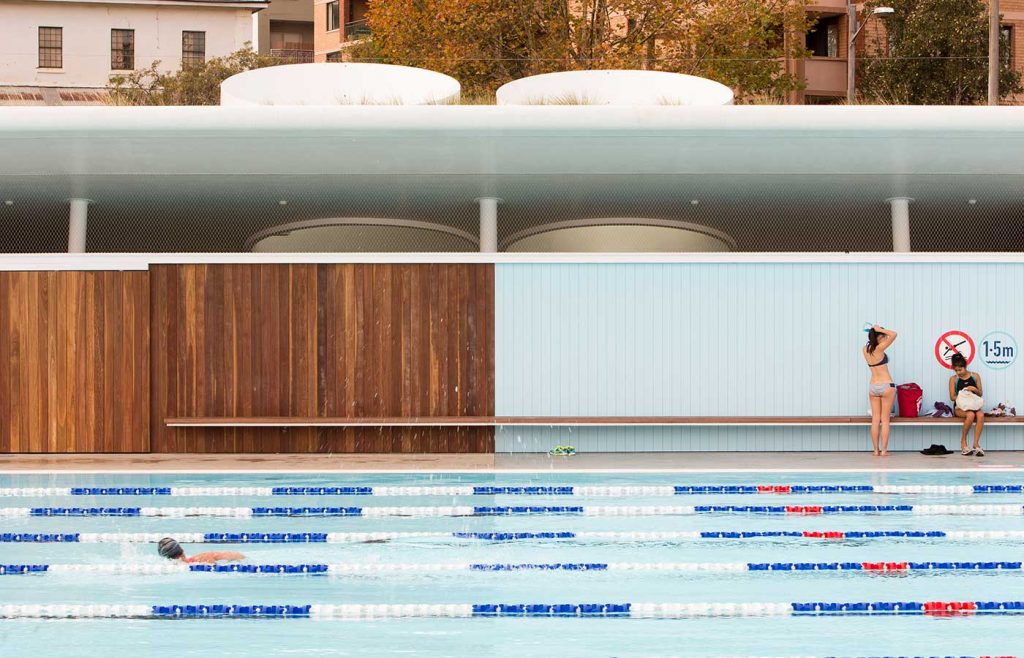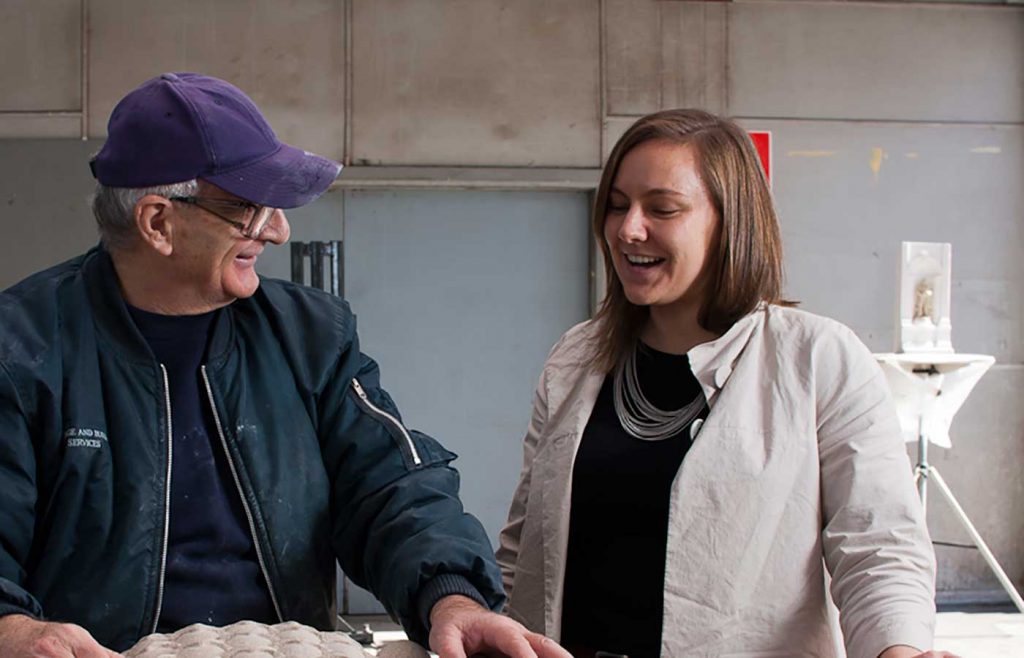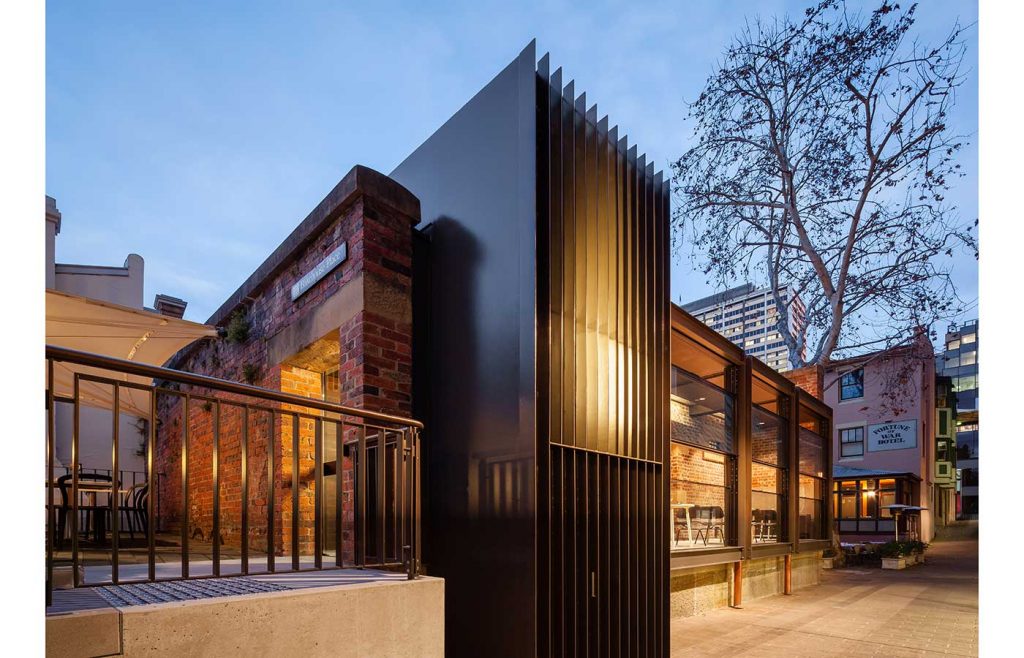



table of contents

previous articles

next articles
Feature article



CONTENTS
Elizabeth Sandoval
.
Elizabeth Sandoval recently left the Council of the City of Sydney after 11 years with its City Projects and Property division. As the senior design manager (architecture) for Prince Alfred Park Pool, Surry Hills Library and Community Centre as well as Gunyama Park Aquatic and Recreation Centre, she has been part of the development and delivery of a number of award-winning projects for the City of Sydney
Can you describe the way in which you have practiced within architecture?
ELIZABETH SANDOVAL: When I first started working within City Projects, the division was just commencing to embrace the practice of design management as a complement to project management in the development and delivery of the City’s capital works projects (buildings, open spaces and streetscapes). Working for Council at the beginning was not particularly inspiring as some of their built work was mediocre. But I was attracted to the role because of the Lord Mayor Clover Moore’s dedication to improving Sydney. The City developed the Sustainable Sydney 2030 vision and from this we really started gaining momentum at City Projects to work as design managers with architects, landscape architects and engineers to produce great public architecture and open spaces.
Most of the design managers within City Projects had an architecture or landscape architecture background. Our training taught us to analyse project opportunities and constraints, question briefs, test options and consider all project inputs – so that is what we did to develop projects in partnership with the community and our specialist City clients. The direction and dedication of Manager of Design Chris Thomas to producing progressive work inspired me. Great public architecture and open spaces are always borne out of a strong vision.
Within that manner of practice, can you define your principal architectural ambitions?
Our ambition within design management was to create legacy public projects with the best creative talent by utilising the resources available to us. City assets should set standards, then exceed them. As a design advocate and resident of Sydney, I was driven to help create public projects that resonated with all community members.
I was also interested in encouraging both emerging and established architects to work with the City, despite the bureaucracy associated with a local government client. At the time many design practices wanted to contribute to the City’s body of built work, but didn’t know how to create these opportunities. Design management assisted to bridge that gap.
Can you describe a particular project you have engaged with which has been developed in that ambition?
Prince Alfred Park Pool is the legacy public project that tested and taught me the most and as such, it is the closest to my heart. I started working on that project with a brilliant City client from the outset and was the project’s custodian to handover. Together, the client and I developed the project brief and scope prior to procuring an emerging and super-creative architect. Among many lessons, Prince Alfred Park Pool taught me the importance of giving the project team time to design, test and develop a project in consultation with the community. The first scheme that the team came up with was amazing, but it didn’t meet all the community objectives. We ended up with a beautiful oasis in the City even though it took longer than originally planned, an investment which paid off.
Gunyama Park Aquatic and Recreation Centre is another potential legacy project in development. With the lessons learned from Prince Alfred Park Pool in mind, I integrated a ‘Design Competition Refinement’ stage and comprehensive engagement plan into the design and delivery process to help connect key City clients and community groups with the selected team to provide time to cross pollinate ideas.
How do you see those ambitions in relation to the wider ambitions of the City of Sydney and more broadly to the practice of architecture?
Design management ambitions of design and environmental excellence were in total alignment with the City’s 2030 vision during my time with the City. Recent management changes within the City Projects and Property division have shifted away from these ambitions, towards a focus on time and cost efficiencies above all else. Design management is in the process of being phased out, which I believe will eventually lead to a drop in the quality of built work and consultation. To deliver great public architecture and open spaces you need the talent, time and space to collaborate, consult and create. The City Projects and Property division needs a design champion at the helm otherwise it may return to building mediocre projects. The recently elected Council is amazing and I am sure they will prevent this from happening.
Lastly, what are your thoughts on the future of architectural practice?
Over the past few years, I’ve become fascinated in learning about how the environment we live in, create and experience positively or negatively affects our biology. In the future, my practice will be geared at creating healthy environments that build vitality.
.
.
Lucy Burke-Smith
.
Lucy Burke-Smith is an architect and heritage specialist working within government as a custodian of the historic built environment. She is currently the conservation manager for the Port Arthur Historic Sites Management Authority (PAHSMA), which is responsible for the Port Arthur coal mines and female factory historic sites in Tasmania. Prior to relocating to Hobart, Lucy studied architecture at the University of Newcastle and was a heritage architect with the Sydney Harbour Foreshore Authority
Can you describe the way in which you practice within the field of architecture?
LUCY Burke-Smith: In essence, my role is that of a professional client. It is my responsibility to ensure the values and fabric of a place are retained, conserved and enhanced while developing informed briefs, which establish a vision for architects to respond to. It is important for me to source and foster collaborations with architects and other consultant groups that will deliver the best outcomes for the historic built environment, while also ensuring excellence in contemporary design. Balancing this, I also provide advice to those within government as to the value of their investment.
Within that manner of practice, can you define your principal architectural ambitions?
My ambitions, stemming from conservation practice, are two-fold: the conservation of fabric and values, and ensuring design excellence in historic settings and streetscapes. The conservation ambition is paramount, as not all conservation projects involve a contemporary design response or intervention; you may simply be establishing the best manner through which to preserve an element within a ruin.
I would think that all architects are striving for design excellence but the community should be too. Society should demand that the contemporary Australian vernacular steps well away from cookie-cut responses and blanket planning schemes, which generate poor modern interpretations of federation homes. The Australian Institute of Architects and NSW Heritage Office publication Design in Context guidelines sought to push this move some ten years ago and has been a valuable document for both applicants and assessors. But it seems that assessors and clients need to be further encouraged to be brave in their response to the context and setting within which they are seeking to build.
Can you describe a particular project you have engaged with which has been developed in that ambition?
The Port Arthur Visitor Centre Project is representative of these ambitions. The project architects, RosevearStephenson have designed a building that sits within the historic and cultural landscape of the Port Arthur Site and responds discreetly to its context and setting.
The former Police Station in The Rocks also embodies these ambitions. Together with Welsh + Major, we were able to reestablish a viable and appropriate use for this building designed by Government Architect James Barnet in the early 1880s that retained the original plan form and much of the significant fabric. This project won the Heritage Award in the 2014 NSW Architecture Awards.
How do you see those ambitions in relation to the wider practice of architecture?
These ambitions are consistent with the wider practice of architecture and possibly also supportive of it. If the architectural community is to demand an emerging and continuing dialogue with the community that seeks excellence in both residential and public architecture, it requires a client that not only appreciates the value of the exercise but can advocate for and drive those projects.
Do you see these ambitions as reconciling a current deficit in the practice of architecture?
I do. As we see a push for shifting away from the custodianship of public buildings, with various heritage asset owners releasing their built heritage assets, or outsourcing their management and care, we are at risk of losing the fabric and values of these places. It is essential that decisions as to the ongoing management and conservation of our heritage assets are overseen by those with experience in the field.
What are your thoughts on the future of architectural practice?
I would like to see architectural practice develop to include a formal register of heritage architects. While the Institute’s Heritage Policy advocates that those giving advice with regard to the conservation of building should be registered architects, it is in the interests of the profession and the historic built environment, that we take the next step toward registration as a heritage architect. Such a move should be further supported by an expansion of conservation practice through architectural education.















